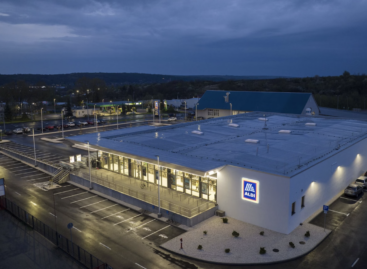Largest Apple Store in Europe in Palazzo Marignoli
Apple Via del Corso is the largest Apple Store in Europe and occupies the historic Palazzo Marignoli, near the Piazza Colonna, in the centre of Rome.
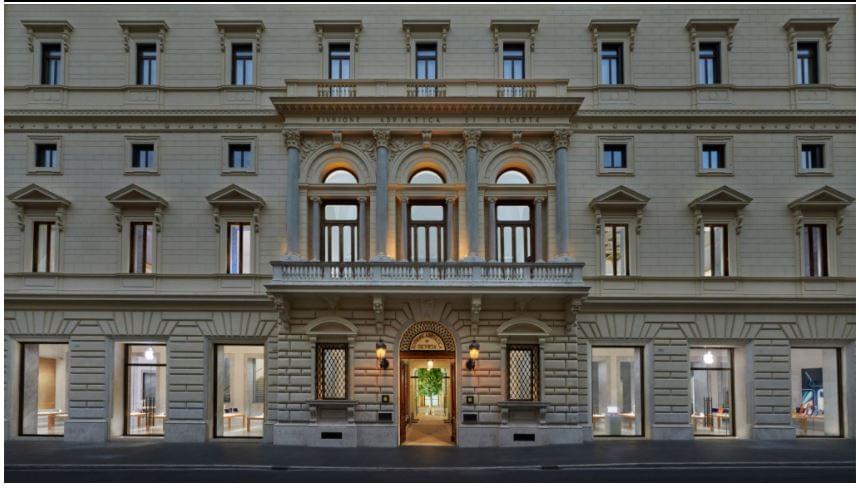
Fosters + Partners has restored and converted the Palazzo Marignoli in Rome into an Apple Store, uncovering historic features and opening up a central courtyard.
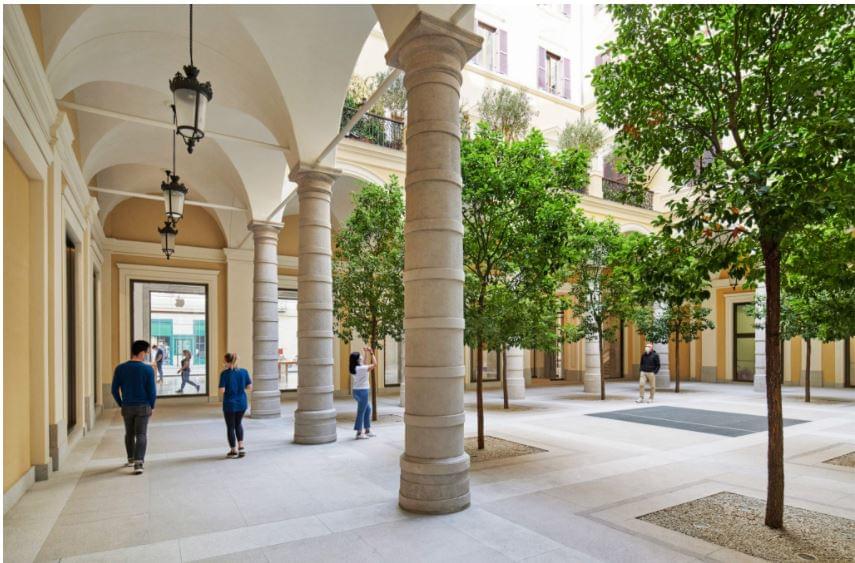
Historical heritage
The Apple Via del Corso building sits on a site that held a church and a convent in the 16th century. The current Palazzo Marignoli building was constructed between 1873 and 1878 and served as a home for Marquis Filippo Marignoli. It also housed the Caffè Aragno, a famous gathering spot for artists. Foster + Partners wanted to celebrate its history by highlighting its grandeur and restoring its historic features.
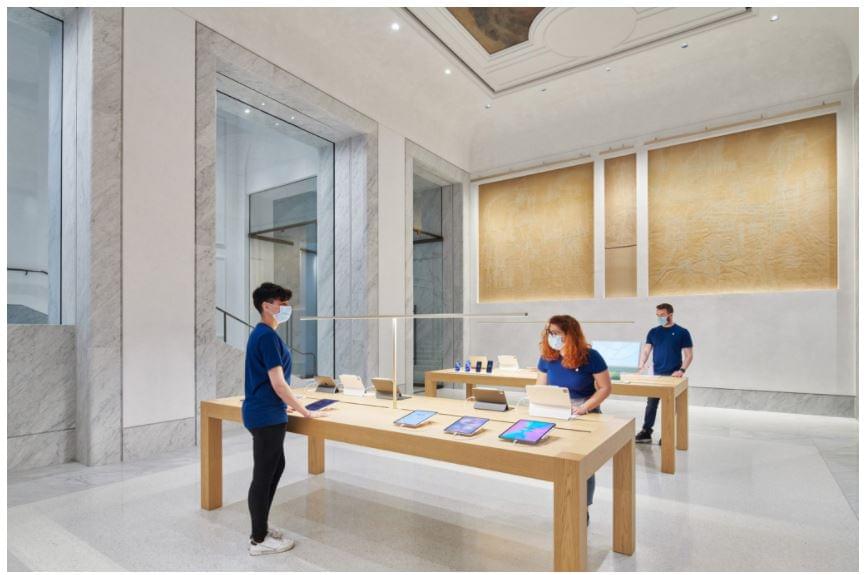
Art of centuries
L-shaped in its plan, the building is organised around a large courtyard that the studio opened up to be used by the public and to greet visitors upon entry into the building. Camphor trees placed across the courtyard informed by the 16th-century convent that previously existed on the site.
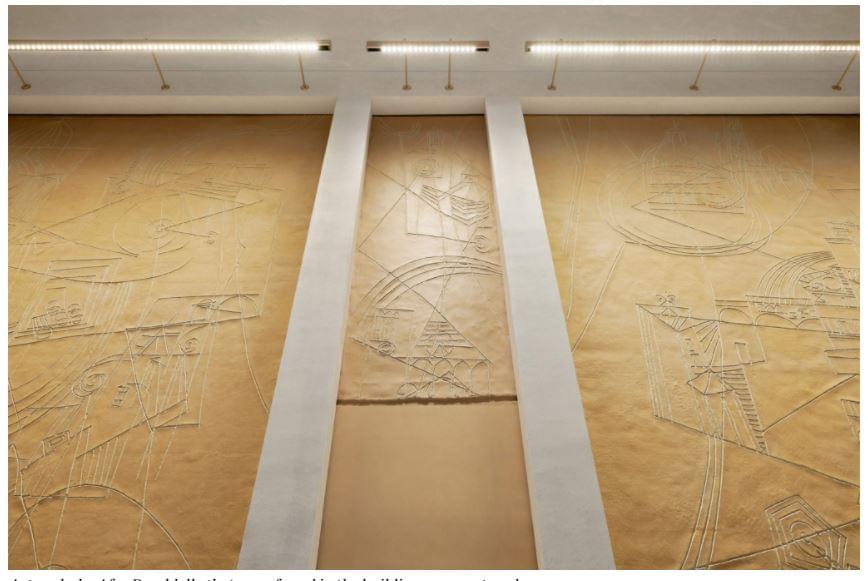
Artworks by Italian artist Afro Basaldella from the building’s art cafe days abstractly depict imagery and scenes of Italy were carefully restored and set into the walls.
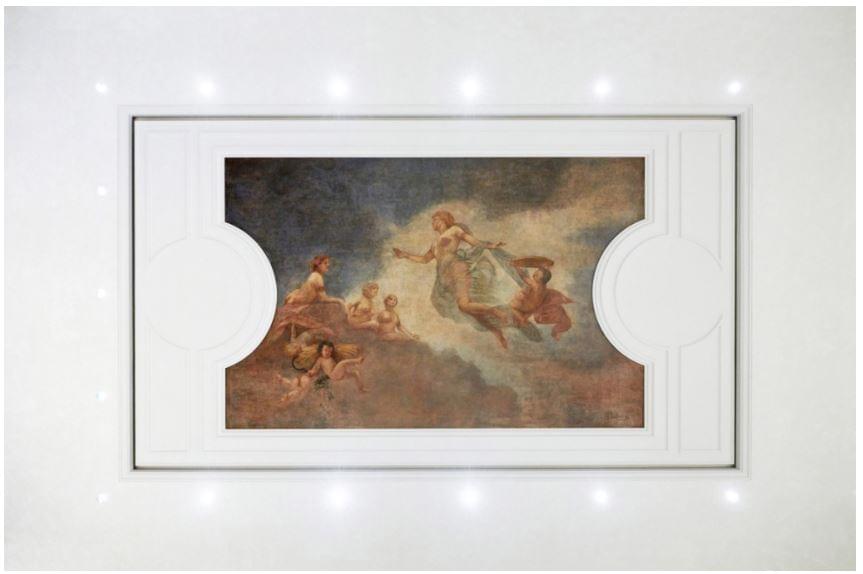
Large early-1900s ceiling paintings by Fabio Cipolla and Ettore Ballerini have also restored and incorporated above the marble interiors between ceiling panelling.
Special retail areas
On the first floor, a long corridor connects a forum space with a Genius Bar and three retail areas. The forum-style space will be used for community events, occupying what used to be the Palazzo’s ballroom a central point of the first floor.
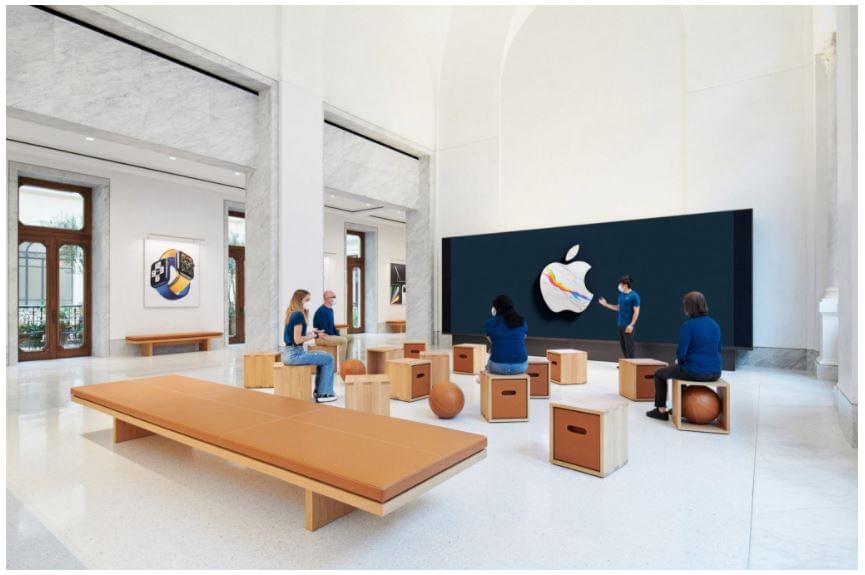
In the Genius Bar, conservators restored a hand-painted geometrically patterned ceiling with decorative crown mouldings.
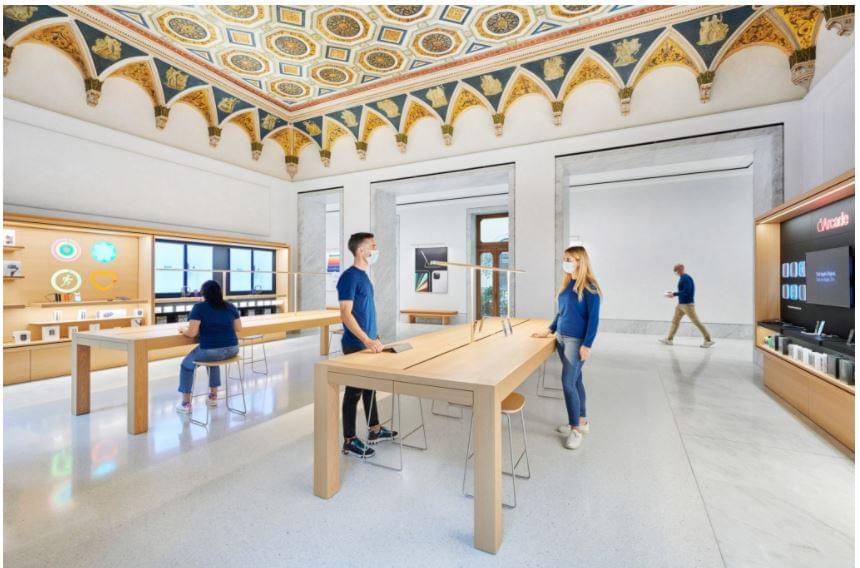
Wooden furniture and joinery were used throughout to bring warmth to the interior spaces.
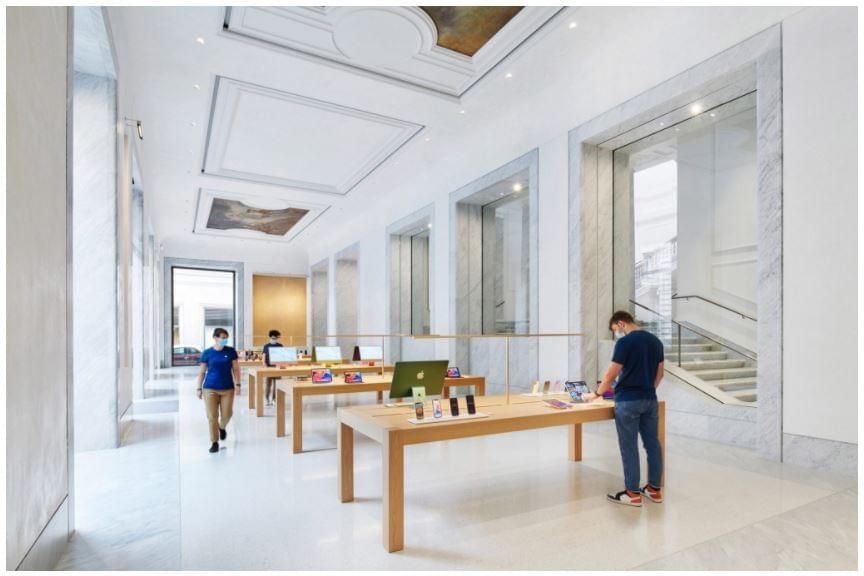
Apple Via del Corso is one of many historic buildings the technology company has opened stores in, including the Foster + Partner designed Champs-Élysées store (2018) in Paris and the converted Washington DC library (2019). They are beautiful examples of the adaptive reuse of buildings and areas, which bring historical or abandoned properties to new life with a completely different purpose from the original.
Related news
Apple is the world’s most valuable brand for the 13th year in a row
🎧 Hallgasd a cikket: Lejátszás Szünet Folytatás Leállítás Nyelv: Auto…
Read more >This is how Apple and Google occupy the checkouts of Hungarian stores
🎧 Hallgasd a cikket: Lejátszás Szünet Folytatás Leállítás Nyelv: Auto…
Read more >Apple is the world’s most valuable brand for the fourth year in a row
🎧 Hallgasd a cikket: Lejátszás Szünet Folytatás Leállítás Nyelv: Auto…
Read more >Related news
Temu is crushing domestic webshops – Christmas won’t change either
🎧 Hallgasd a cikket: Lejátszás Szünet Folytatás Leállítás Nyelv: Auto…
Read more >The Hungarian Food Bank is putting together 44,000 food packages from the proceeds of ALDI’s first Advent market
🎧 Hallgasd a cikket: Lejátszás Szünet Folytatás Leállítás Nyelv: Auto…
Read more >How to prepare for the holidays with your four-legged friend
🎧 Hallgasd a cikket: Lejátszás Szünet Folytatás Leállítás Nyelv: Auto…
Read more >




